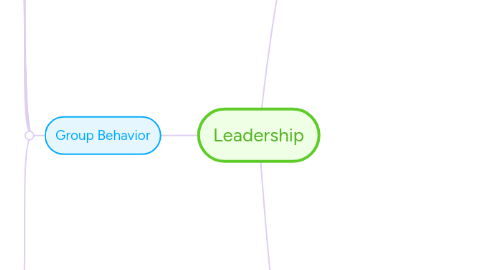
1. Change and Transition
1.1. Area of control, influence, no control
1.1.1. People experience stable psycho-social levels during status quo
1.1.2. People's psycho-social experience shift from stability to instability during times of change
1.2. Change vs Transition
1.2.1. Change
1.2.1.1. External
1.2.1.1.1. Situational
1.2.1.1.2. External
1.2.1.2. Psycho-social adjustments
1.2.1.2.1. Adjustments that people go through
1.2.1.2.2. Internal
1.2.2. Transition
1.2.2.1. Change within people going through external changes
1.2.2.2. Re-orientation, adjustments needed to respond
1.3. Protecting the status quo and resistance
1.3.1. Reasons for resistance
1.3.1.1. Habit
1.3.1.2. Fear of the unknown
1.3.1.3. Absence of skills
1.3.1.4. predictability
1.3.2. Symptoms of resistance
1.3.2.1. Procrastination
1.3.2.2. No-follow-through
1.3.2.3. Unprofessional behavior
1.3.2.4. Low productivity
1.3.2.5. Lack of initiative
1.4. Managing transitions
1.4.1. Status quo, intro of change
1.4.1.1. shock, fear, resentment
1.4.1.2. Paralyzed inconsistent, passive aggressive
1.4.2. Transition actual change process
1.4.2.1. anxiety, confused, ambivalence
1.4.2.2. unproductive, performance dip, easily discouraged, back to status quo, conflicts, negotiations
1.4.3. Desired state
1.4.3.1. Anticipation, confidence, satisfaction
1.4.3.2. Form new habits, productive team play
1.4.3.2.1. Skill: Observing non-verbal communication: signals of psycho-social transition process
1.5. Psychoemotional impact of change on people
1.5.1. Denial
1.5.2. Anger
1.5.3. Depression
1.5.4. Bargaining
1.5.5. Acceptance
2. Group Behavior
2.1. Social Facilitation
2.1.1. In groups, people learn better at well-learned tasks
2.2. Group Think
2.2.1. Groups tend to stifle disagreements
2.3. Social Loafing
2.3.1. Groups tend to make more extreme decisions
2.4. Group Polarization
2.4.1. The bigger the groups, the smaller the individual contribution
2.4.2. Smaller portion will do a larger part of the work
2.5. Bystander Effect
2.5.1. As the size of a group increases, the motivation to help a person in need decreases.
2.5.2. People will only get involved if someone gets involved.
2.6. Social Identity
2.6.1. In-group bias
2.6.1.1. preferential treatment to those in our ingroup
2.6.2. Out-group
2.6.2.1. preferential treatment to those who are less similar or not part of the group
2.7. Process observation and analysis
2.7.1. Content
2.7.1.1. what the group is talking about
2.7.2. Process
2.7.2.1. how the group is dealing with its communication
2.7.2.1.1. Communication
2.7.2.1.2. Team Roles
3. Conversations for change
3.1. Complexity and leadership
3.1.1. Leadership capabilities in a complex world
3.1.1.1. systems thinking
3.1.1.2. managing networks
3.1.1.3. listening
3.1.1.4. convert problems to opportunities
3.1.1.5. experimentation
3.2. Theory U
3.2.1. 1. Co-initiating
3.2.1.1. build common intent
3.2.2. 2. Co-sensing
3.2.2.1. Observe!
3.2.3. 3. Presencing
3.2.3.1. Connect to the source of inspiration and will
3.2.4. 4. Co-creating
3.2.4.1. Prototype the new
3.2.5. 5. Co-evolving
3.2.5.1. Embody the new
3.3. Levels of conversation
3.3.1. level 1: Downloading
3.3.2. level 2: Debate
3.3.3. level 3: Dialogue
3.3.4. level 4: presencing
3.4. Kotter
3.4.1. 1. Sense of urgency
3.4.2. 2. Guiding Coalition
3.4.3. 3. Army of volunteers
3.4.4. 4. Vision and strategy
3.4.5. 5. Remove barriers
3.4.6. 6. Enable small wins
3.4.7. 7. Sustain acceleration
3.4.8. 8. Institute change

